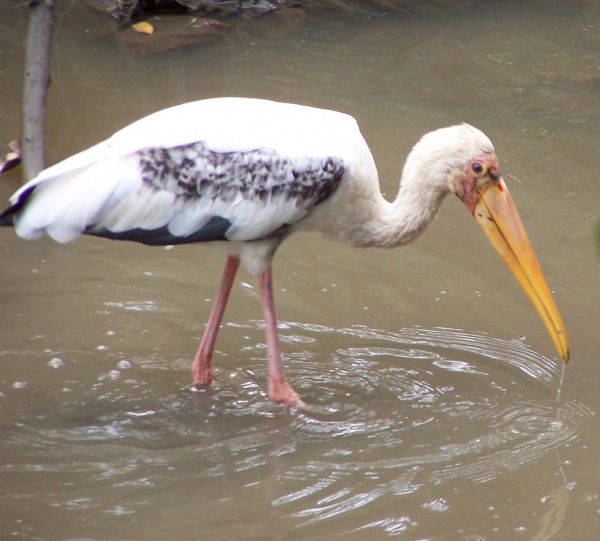Facts About Milky stork
The milky stork is a medium-sized bird indigenous to the coastal mangroves of Southeast Asia. Once classified with the Ibis family, it is now recognized as part of the Mycteria genus, which includes other stork species with similar characteristics. Adults are easily identifiable by their white bodies, black flight feathers, and distinctive facial coloring. They also feature white head feathers, a yellow-orange bill, and pink legs, distinguishing them from other wading birds.
Milky storks typically breed in colonies of varying sizes within mangrove swamps. They construct their nests high up in tall trees using live sticks and leaves. A typical nest contains 1-4 eggs, which are incubated for about 27-30 days. Both male and female storks participate in courtship displays and share nesting duties.
In terms of diet, milky storks have a varied palate that includes mudskippers, catfish, and other fish species. They hunt using a technique known as bill probing and groping, feeling around with their bills to capture prey. However, their survival is threatened by habitat destruction, human disturbance, and predators. To address these threats, conservationists have established captive breeding programs and reintroduction projects aimed at boosting their numbers.
Unfortunately, the global population of milky storks has experienced a significant decline, leading to their classification as Endangered by the IUCN in 2013. Habitat loss and human activities are major factors contributing to this decline, with the species nearing extinction in some regions. Conservation efforts are crucial for protecting these birds and increasing awareness about their endangered status.

 Timor Leste
Timor Leste